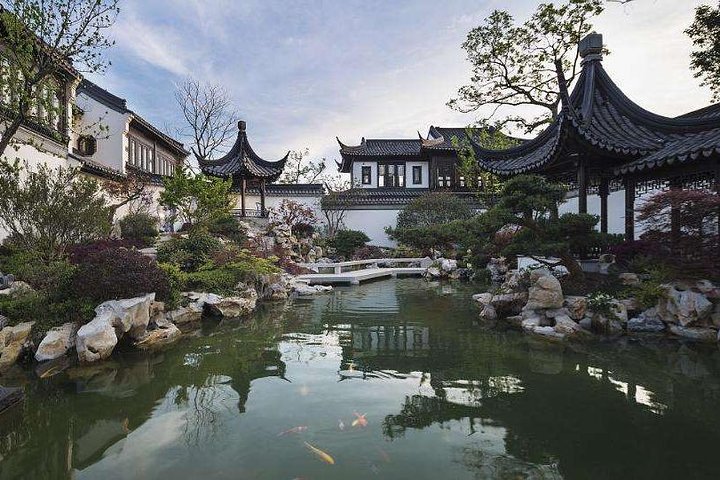Exploring Suzhou: A Cultural Odyssey Through Museums and Silk
Eager to explore the rich cultural heritage of Suzhou, I embarked on a journey that promised a blend of history, art, and tradition. From the architectural marvel of the Suzhou Museum to the enchanting world of Kun Opera and the timeless art of silk-making, my experience was nothing short of extraordinary.
A Journey Through Time: Suzhou’s Cultural Tapestry
Stepping into Suzhou felt like stepping into a living tapestry of history and culture. As someone who has always been fascinated by the intricate dance of tradition and modernity in Asia, I was eager to explore the city’s rich heritage. My journey began at the Suzhou Museum, a masterpiece designed by the renowned architect I.M. Pei. The museum’s architecture itself was a sight to behold, seamlessly blending modern design with traditional Chinese elements. Inside, I was captivated by the vast collection of ancient ceramics and cultural relics, each piece telling a story of Suzhou’s storied past. The centerpiece, a serene lotus pool, offered a moment of reflection amidst the bustling energy of the museum.
From the museum, I embarked on a boat ride along the canal to Pingjiang Road. This ancient stone route, with its white-walled houses and black-tiled roofs, was a nostalgic journey back in time. The gentle lapping of water against the boat and the sight of locals going about their daily lives painted a vivid picture of traditional Suzhou. As I strolled along the road, I couldn’t help but feel a deep connection to the city’s history, a feeling that was only heightened by the stories shared by our knowledgeable guide.
The Art of Kun Opera: A Cultural Gem
The next stop on my journey was the Kun Opera Museum, a place that holds a special place in the heart of Chinese cultural heritage. Kun Opera, often referred to as the “ancestor of Chinese operas,” is a mesmerizing art form that has been recognized by UNESCO as a Masterpiece of the Oral and Intangible Heritage of Humanity. As I wandered through the museum, I was struck by the elegance and grace of the costumes and the intricate details of the stage sets. The museum offered a fascinating insight into the evolution of this ancient art form, and I found myself lost in the stories of legendary performances and celebrated artists.
The highlight of my visit was a live performance of Kun Opera. The haunting melodies and expressive movements of the performers transported me to another world, a world where stories of love, betrayal, and heroism came to life. It was a truly unforgettable experience, one that deepened my appreciation for the rich cultural tapestry of Suzhou.
Silk: The Fabric of Suzhou’s Legacy
No visit to Suzhou would be complete without exploring its renowned silk industry, and the No.1 Silk Factory was the perfect place to do just that. Established in 1926, the factory is a testament to Suzhou’s legacy as the silk capital of China. As I toured the factory, I was fascinated by the intricate process of silk production, from the manual peeling of cocoons to the weaving of delicate fabrics. The factory tour was not only educational but also interactive, allowing visitors to participate in the silk-making process.
The experience was a vivid reminder of the skill and craftsmanship that goes into creating silk, a fabric that has been cherished for centuries. As I watched the artisans at work, I was reminded of the importance of preserving traditional crafts in a rapidly modernizing world. The visit to the No.1 Silk Factory was a fitting end to my journey through Suzhou, a city that beautifully weaves together the threads of history, culture, and tradition.
In conclusion, my exploration of Suzhou was a deeply enriching experience, one that offered a unique glimpse into the city’s cultural heritage. From the architectural marvel of the Suzhou Museum to the enchanting world of Kun Opera and the timeless art of silk-making, Suzhou is a city that invites you to immerse yourself in its rich tapestry of history and tradition. I left with a profound appreciation for the city’s cultural legacy and a desire to return and explore even more of its hidden gems.














































